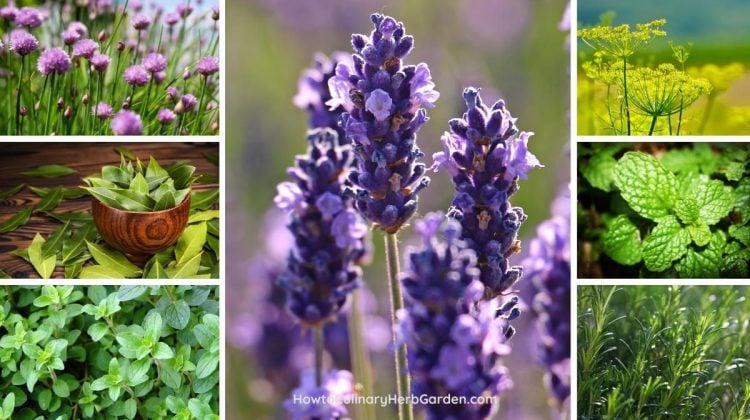Table of Contents
As gardening enthusiasts, we have always been fascinated by the resilience and beauty of perennial herbs. These plants return every year, even in harsh weather conditions. With their deep roots and strong stems, they can survive droughts, freezes, and wildfires and emerge each spring with renewed vigour.
Perennial herbs in the UK, from fragrant lavender to the tangy taste of thyme, offer a wonderful array of flavours and aromas to any garden or kitchen.
So whether you are a seasoned gardener or just starting, explore the wonderful world of perennial herbs and discover the satisfaction of growing them. One of the great benefits of growing them is that they provide a consistent harvest without the need for constant replanting.
Here are 18 perennial herbs and information on how to best grow them! In addition, you;can buy essential gardening tools.
1. Mint
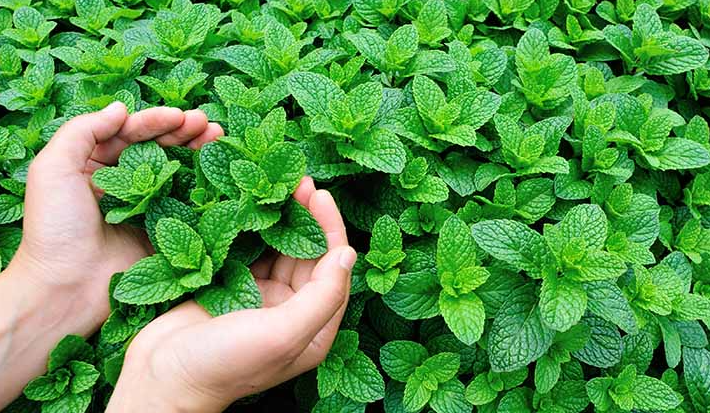
Mint is a perennial herb with little purple, pink, or white blooms and extremely aromatic, toothed leaves. Mint comes in various shapes and colours, and each variety is full of fragrance. It can be glossy or fuzzy, soft or crinkled, vivid green or variegated. However, one can identify a mint family member by its square stem. You smell a strong scent when rubbing it between the fingertips and get reminded of candies, sweet beverages, or even mint juleps.
In addition to being cooking companions, mints are extensively utilized as herb remedies, air fresheners, ground coverings, and landscape embellishments. They are both aesthetically pleasing and useful, easy to grow and thrive in both sun and shade in North America. You only need to be cautious where you plant mint as it grows quickly.
2. Oregano
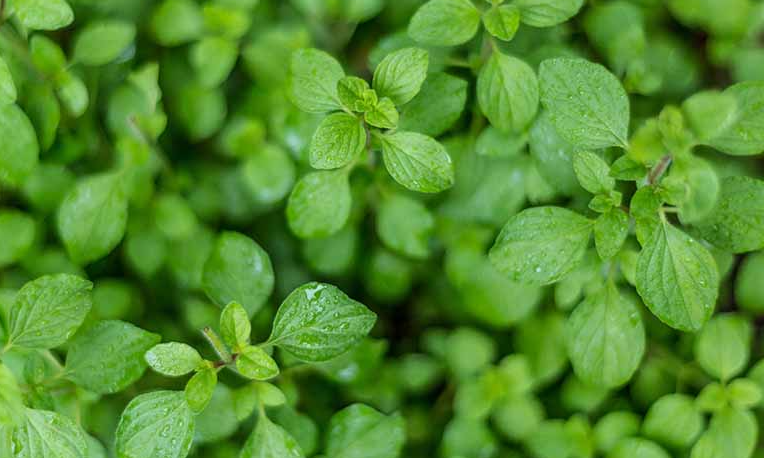
Oregano is an essential herb in a kitchen garden. Because it’s simple to grow and great for novices and one of the most used perennial herbs in the UK. Oregano blooms well in containers or even as ground cover alongside a walkway when it starts to thrive in the spring. A woody perennial plant, oregano. It is a strong herb with a sting of pepper and a minty scent.
The term “oregano” means “joy of the mountain” in Greek, and it is undoubtedly a favourite herb for any Mediterranean dish. Pizza, tomato sauce, almost anything tomato-based, kabobs, roasted potatoes, white beans, vinaigrette, egg dishes, grilled summer vegetables like zucchini and eggplant, and Greek salad all benefit from the savoury taste that oregano contributes.
3. Chives
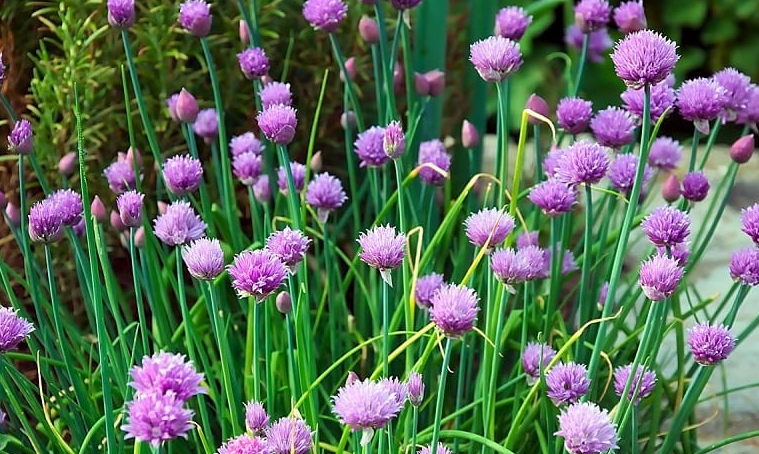
Members of the onion family that are perennial and have lovely edible blossoms are chives. Additionally, they make a fantastic companion plant that helps keep pests away. Long green leaves and purple blooms provide dishes with a delicate oniony flavour while being high in vitamins A and C. We can also plant this herb as an ornamental in perennial flower beds.
These flowers attract beneficial insects like Pollinators and Predators. Any garden, especially container gardens, can support the growth of chives. Chives clumps can get established and return each spring, sometimes being the first greens to appear in the park.
4. Rosemary
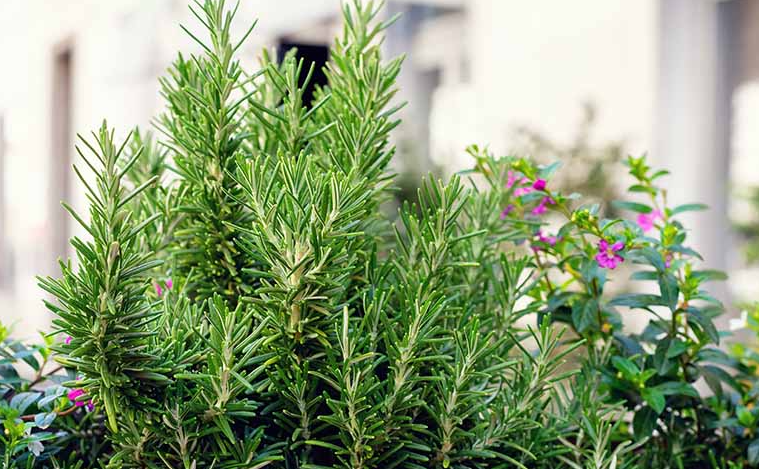
In the US, rosemary is a perennial evergreen shrub that grows as a fragrant herb and is normally hardy to zone 7. It is a native of the Mediterranean region, and its Latin name, which apparently refers to its frequent occurrence near the sea beach, means “dew of the sea”. This herb was mostly used for medical purposes in ancient Rome.
A gardener may grow enough rosemary to meet not only the needs of the family but also every restaurant in the neighbourhood with very little work. The health benefits of rosemary include boosting the immune system and improving blood circulation.
5. Lavender
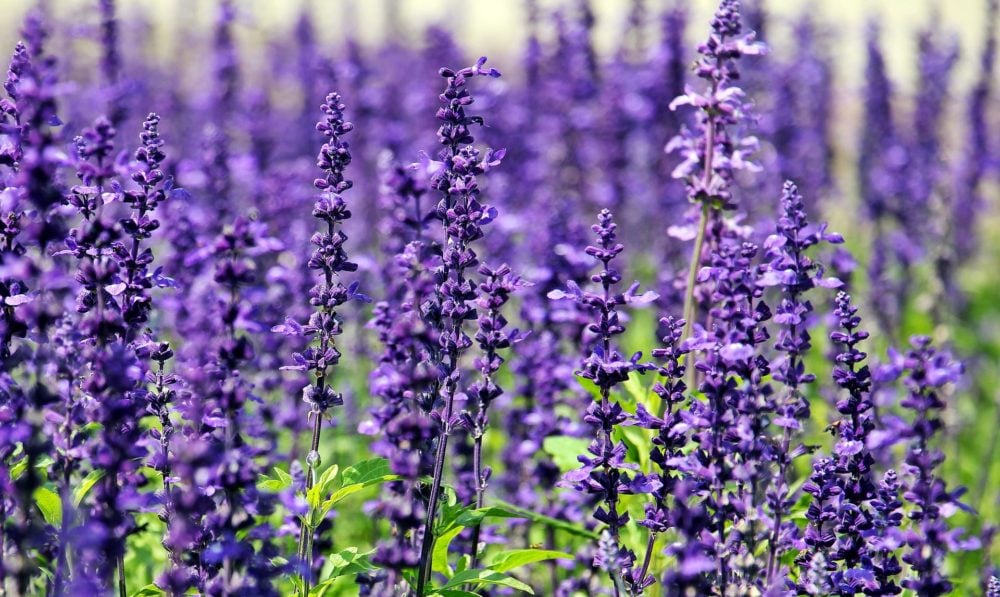
With a distinct floral fragrance, Lavender is one of the most popular perennial herbs in the UK. It is extensively used in skincare and beauty products as it promises to treat skin blemishes and promote hair growth. It comes in the beautiful shade of purple and violet, so its fresh and dried flowers are also used in the form of decor.
However, Lavender is not all about its looks and smell; this herb has several health benefits too. It helps in balancing blood pressure and sugar levels, along with reducing asthma symptoms. Besides, it also provides a refreshing flavour in the form of ice teas, cocktails, and lemonades.
6. Thyme
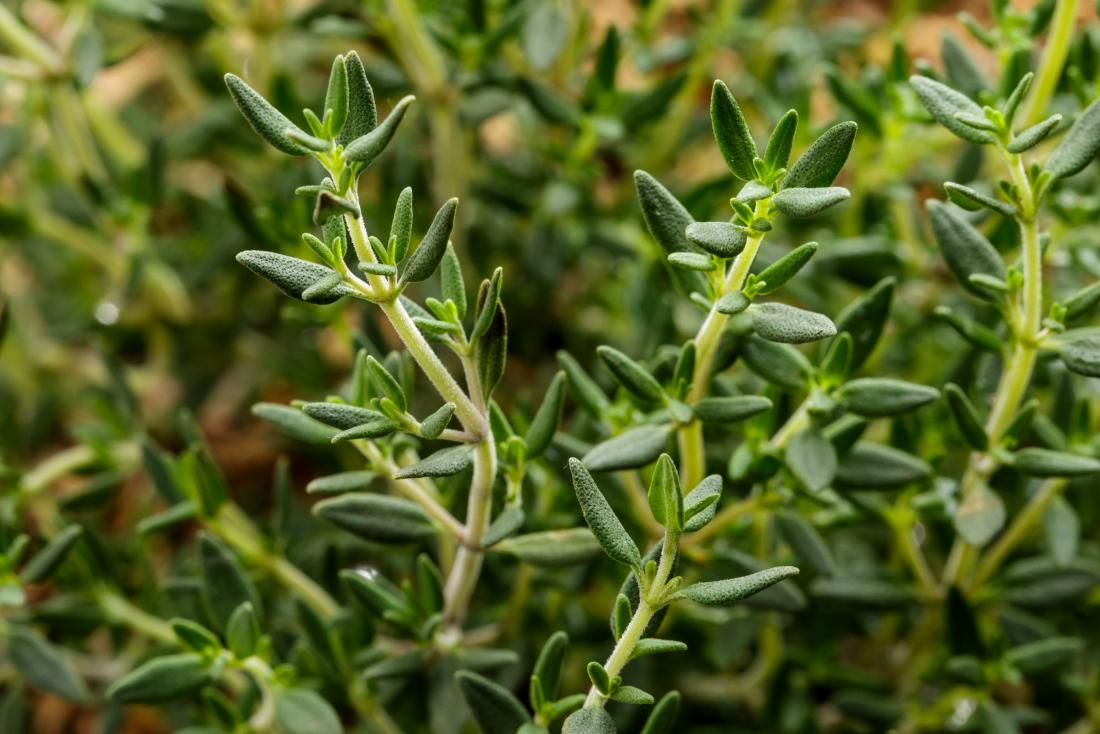
Thyme grows low to the ground making it most suitable for container gardening. This woody herb requires little to no maintenance. However, it becomes dry and nonproductive in about 4 years. The most common medicinal use of Thyme is to treat sore throat and cough.
It also has antioxidant and antiseptic properties, which heal bruises, cuts, and injuries. Consumption of this herb also reduces inflammation of the body. Thyme is easily available online in the form of fresh/dried herbs and essential oils. Its strong taste and smell is also key ingredient in many global cuisines.
7. Parsley
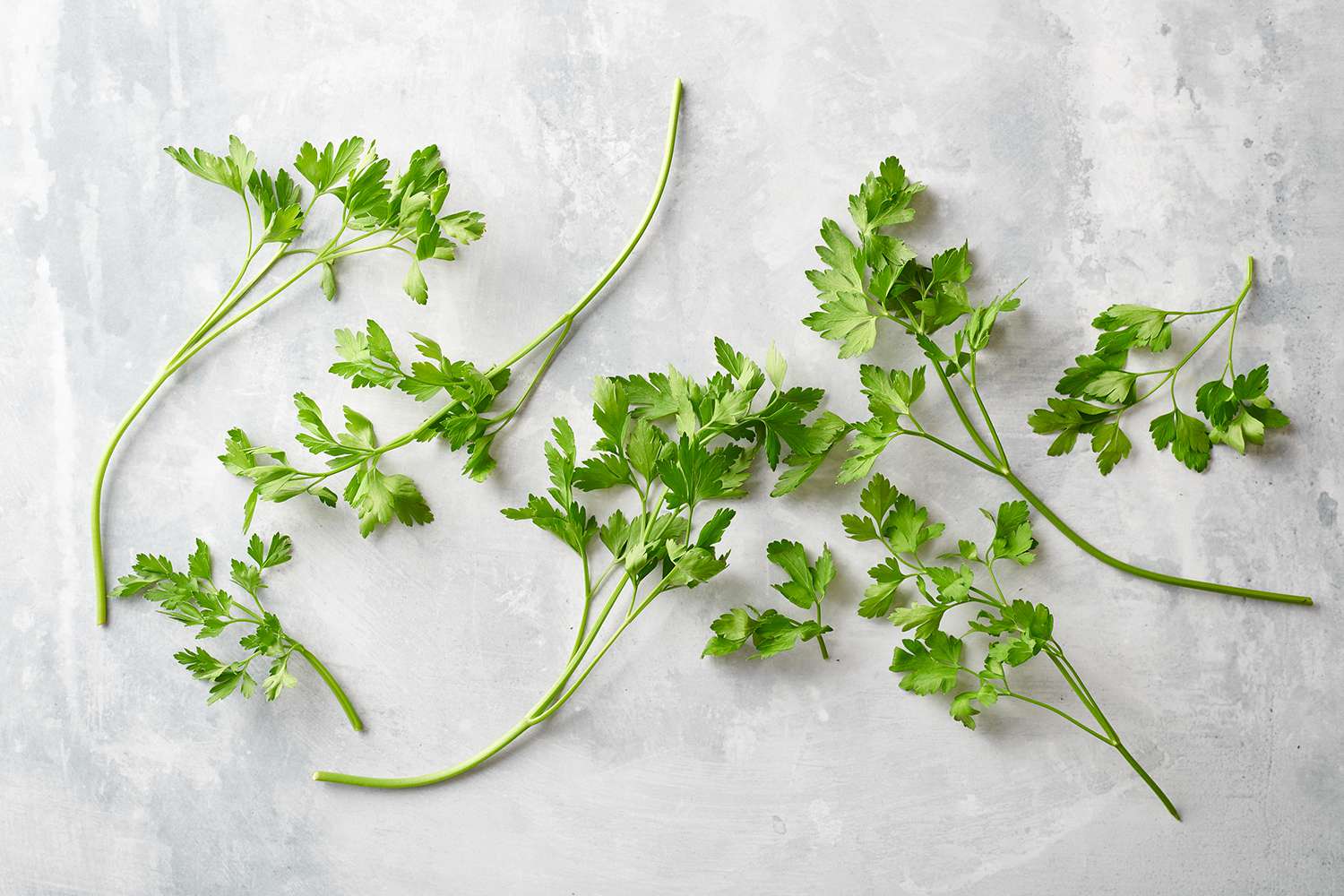
Parsley is one of the common herbs readily available in any household kitchen. It is frequently used for flavouring and seasoning fish recipes, soups, and beverages. It is traditionally used as a garnish since it prompts appetite and improves digestion.
The life cycle of Parsley is two years, making it a biennial. But as it seeds itself, it remains in your garden for a long time. Like any other herb, Parsley has its share of health benefits for the human body. It is especially known to cure kidney stones, ease liver-related problems and improve bone health.
8. Bay
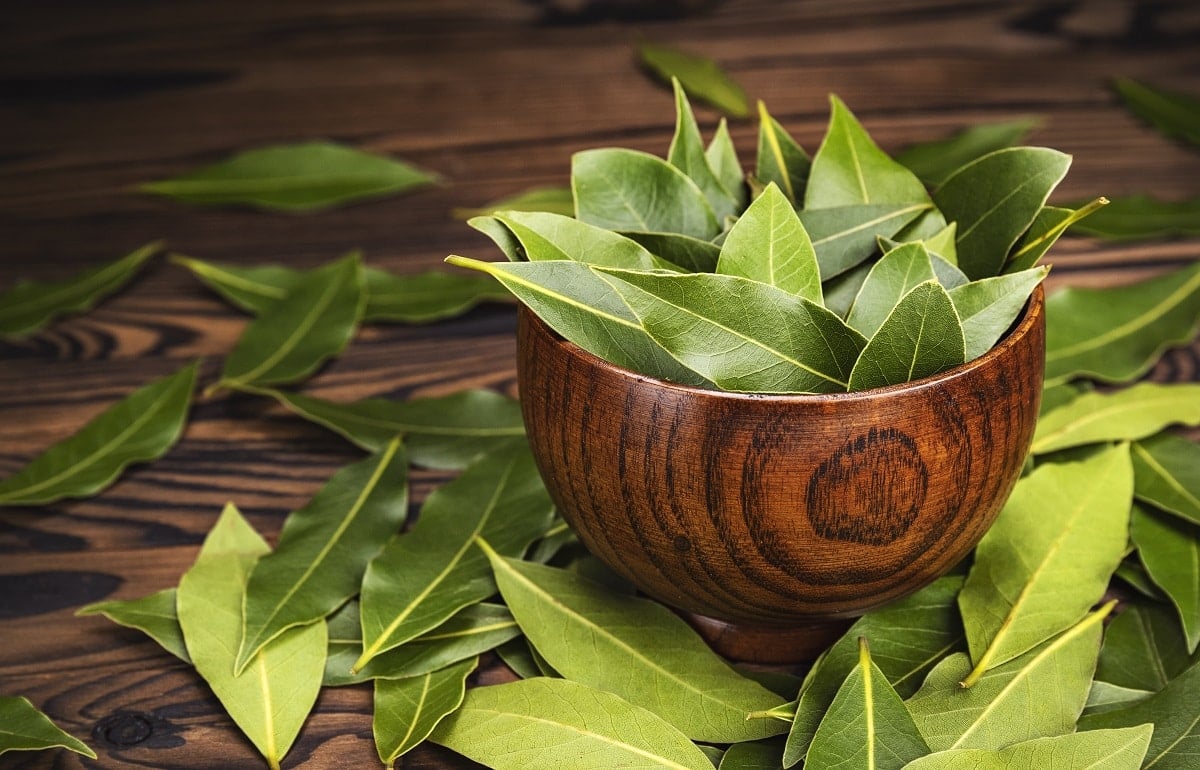
Bay Leaf or Bay Laurel is a spice used in the form of whole dried leaves to flavour stews and curries. This herb needs a warm climate to be planted outdoors. It can be planted in a container; however, if kept unattended, it can also grow into a full-size tree.
Bay leaves have a strong tint of methanal in their flavour, which gets gentler as they are cooked. Its flavour beautifully compliments meats-based dishes. Bay leaves have been used as medicine since ancient times. It is believed to be effective in controlling cholesterol and diabetes.
9. Lemon Balm
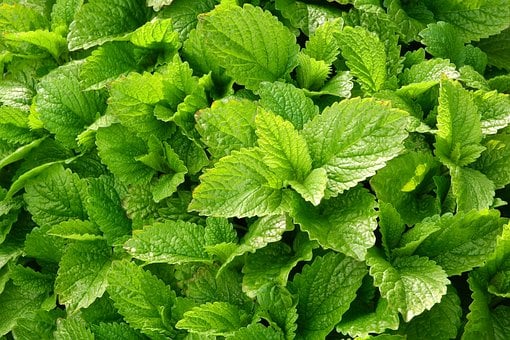
As the name suggests, Lemon Balm is a herb with a lemon-like flavour. It is a fast-growing shrub, so it requires to be cut back to control its growth. Otherwise, extra shrubs of lemon grass may grow till next year. Even then, it is popular among gardeners as it controls the pests organically.
Interestingly, Lemon Balm tea is consumed for its calming properties that can reduce stress and anxiety. Studies have also proven that it heals insomnia and stimulates cognitive functions.
10. Sage
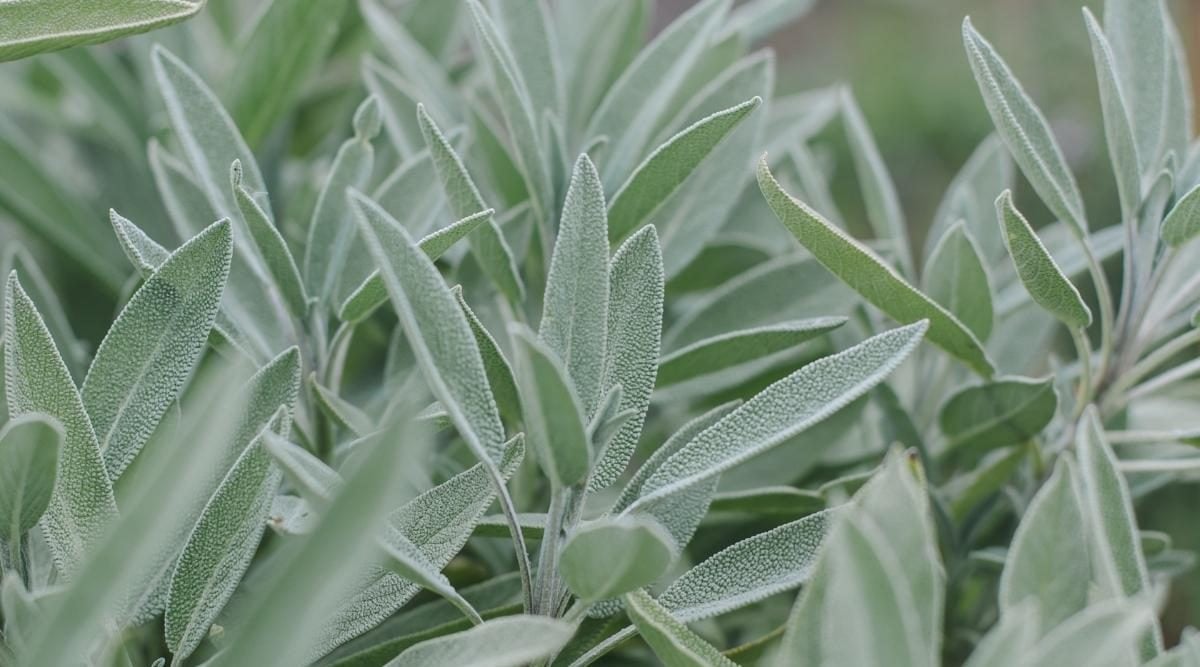
Sage has a peppery flavour that adds comfort to autumn and winter dishes. Its strong earthy aroma goes perfectly with poultry and meat dishes. This herb must be kept hydrated regularly as it prefers to grow in well-drained soil. It is an evergreen shrub with blue/purple flowers and greyish leaves. Sage has antimicrobial properties that keep oral health in check.
It is believed that Sage has estrogen components that can ease the problems related to menopause. Its antioxidant abilities have also been proven to improve the memory of both young and adult brains. Sage smudge sticks are also popularly used for spiritual purposes like a cleansing aura.
11. Roman Camomile
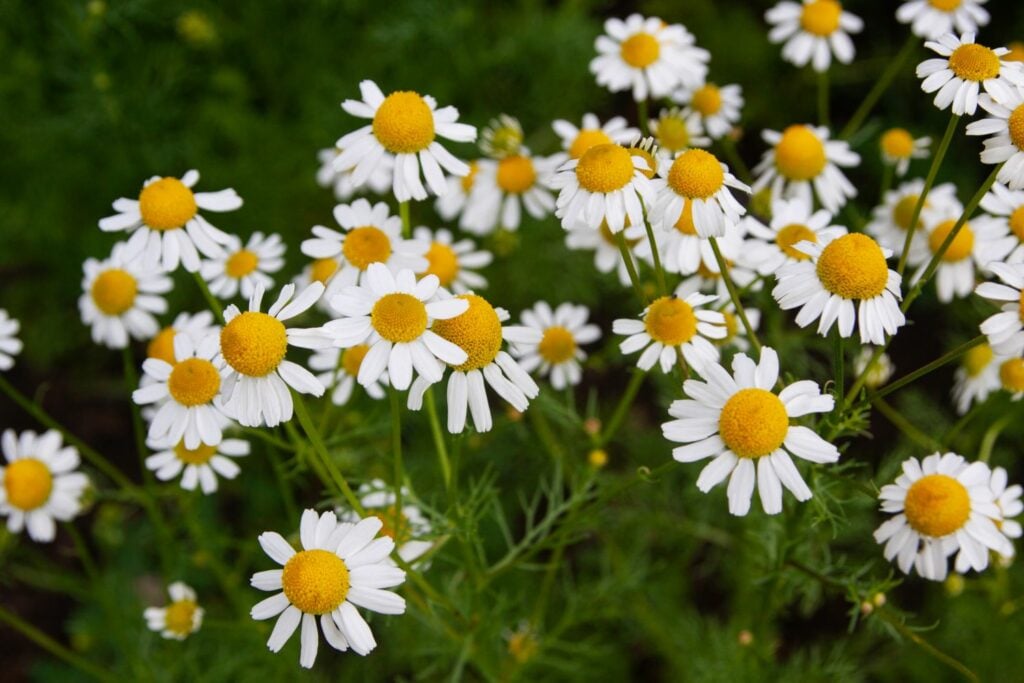
Roman Camomile is one of the several varieties of a Camomile plant. Unlike its German variation, it is a perennial herb that keeps on growing year by year. Roman Camomile tea has a different fan base in the West for its calming and soothing effect on the digestive system. It aids in quelling heartburn, vomiting, and gas.
The expensive Roman Camomile essential oil has lots of cosmetic benefits too. It is used in creams, shampoos, and hair oils. It is believed to be effective on skin-related diseases like eczema and gingivitis.
12. Lovage
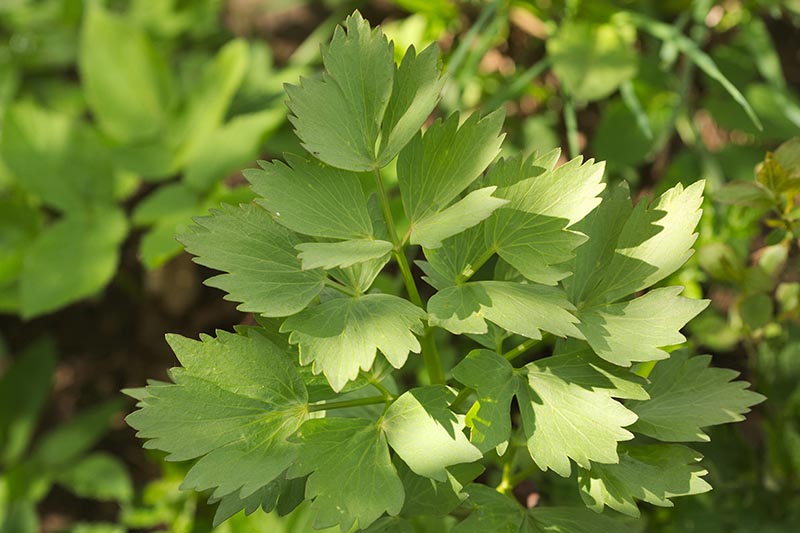
Lovage may not be commonly grown in backyards these days, but it was quite popular in history. It was traded by Romand and European colonists. Besides, Queen Victoria was often seen carrying Lovage candies with her! However, in recent times, this herb has lost its popularity. Now dried Lovage is used as an alternative to celery in salads and cooked dishes.
Lovage is used to regulate menstrual cycles and aids in curing Jaundice. It is rich in Vitamins along with antioxidant and anti-inflammatory properties. This herb needs very low maintenance and bears pretty yellow flowers around the month of July, making it well-suited for gardening.
13. Valerian
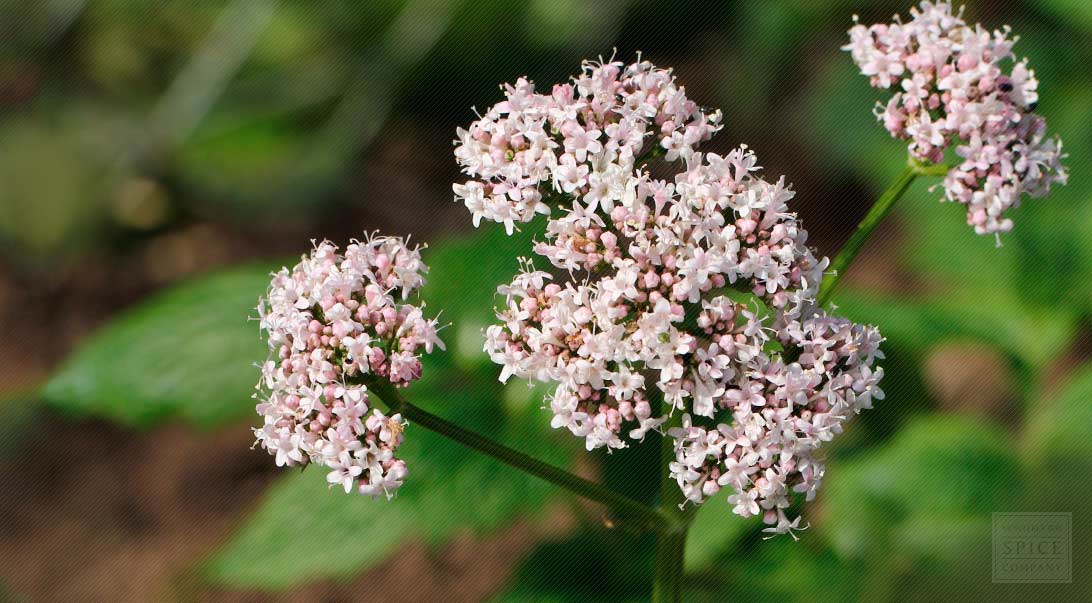
If you want to bring some butterflies to your garden, Valerian is the plant to grow. It has charming white-coloured flowers that attract pollinators and flies that butterflies feed now. Moreover, its flowers have a mild vanilla-like fragrance, and its roots are used for making herbal teas.
This herb has to be planted in relatively excess amounts for its roots because of the chances of its survival. Valerian has been a well-known sedative since historic Roman and Ancient Greek times. It is extensively used in tablets that resolve sleep-related disorders.
14. Hyssop
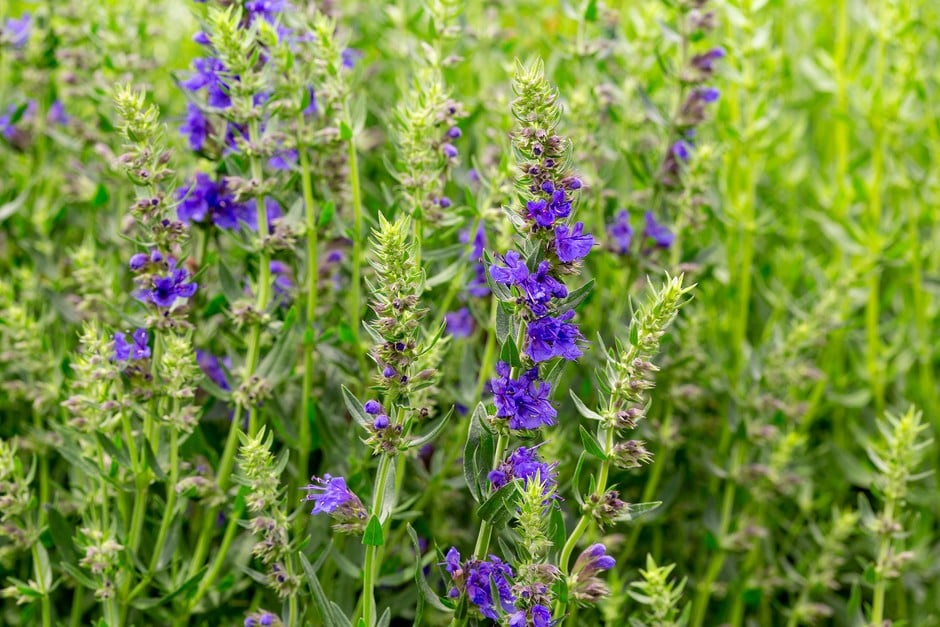
Hyssop is a unique-looking evergreen shrub that can complement your garden. It grows in a tall cluster of purple flowers that can add colour and texture to your gardening pattern. It has a slightly bitter taste that resembles the combination of mint and sage.
This herb has been found beneficial against respiratory diseases like cough, asthma, cold and sore throat. Hyssop oil is used in food and salads, as well as soaps and essential oils.
15. Yarrow
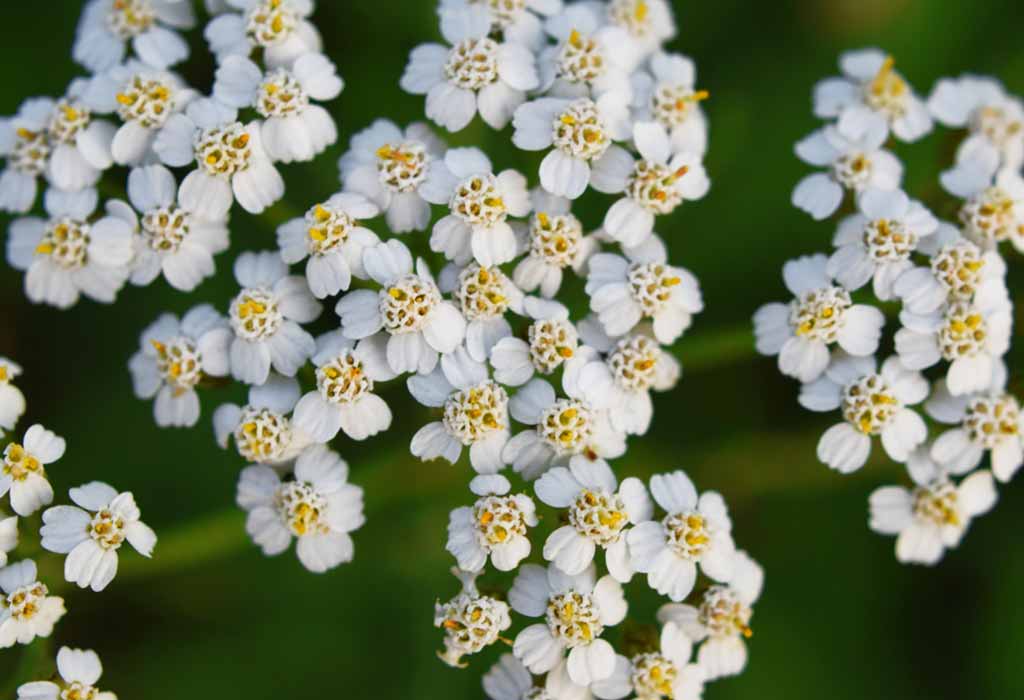
The elegant flowers of Yarrow are perfect for beautifying the edges and corners of your garden. They are available in several colours, like yellow, white, pink, and red. Besides, this shrub grows fast and can take up a lot of space, so it is advised to chop them to keep them in shape.
These flowering plants not only attract pollinators but also repel pests. Yarrow has a special medicinal use that relaxes the muscles in the intestines and uterus, which consequentially gives relief against stomach and menstrual cramps. It is also used in haemorrhoid ointments that soothe discomfort and itching.
16. Sorrel
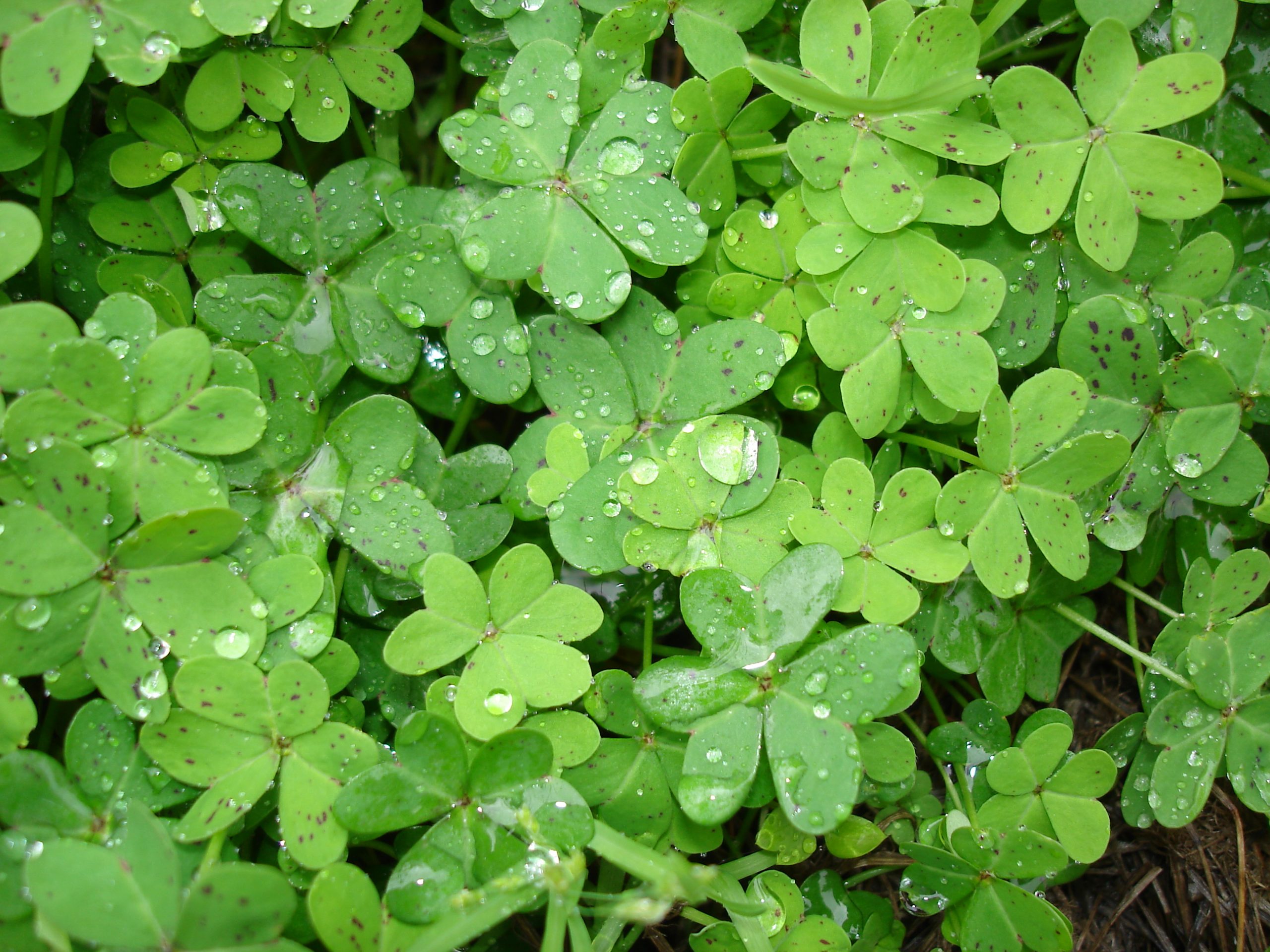
With a piquant spinachy flavour, Sorrel is a herb that is also used as a vegetable. As this plant grows, its flavour becomes stronger, and then it is used as a herb. It also has a citrusy flavour that elevates the taste of salads and beverages.
This plant dies during the harsh weather of winter and grows back in the spring, making it a perennial. As per the study, Sorrel has a high antioxidant activity that can fight heart-related diseases.
17. Cilantro
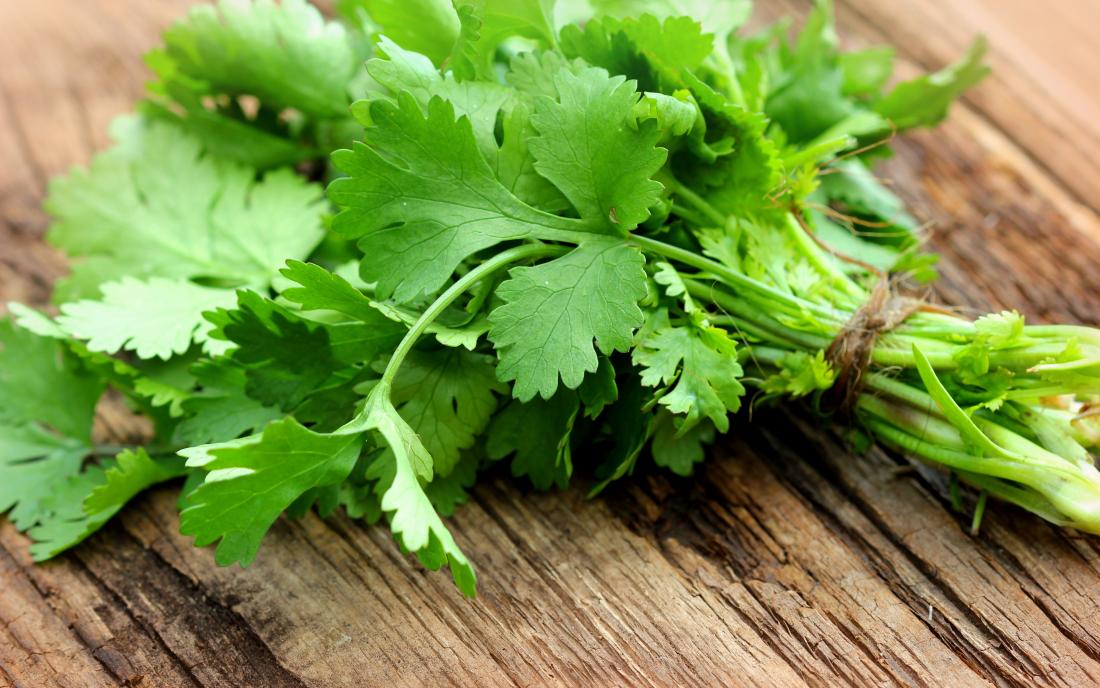
Widely used in Mexican and Asian cuisines, Cilantro is a fast-growing plant. Cilantro is also known as Corriender in some parts of the world. Be it seafood like Shrimp, swordfish, clams, squid, or prawn or meats like chicken, steak, lamb, pork, turkey, or beef; Cilantro adds magic to all kinds of dishes.All the parts of this plant can be eaten, but its delicate bright leaves are specially used for garnishing.
This herb needs sunlight, drained soil, consistent watering, and just a few weeks to grow. This herb has shown anti-cancer effects. It also acts as a remedy against damage caused by the sun on the skin.
18. Bergamot
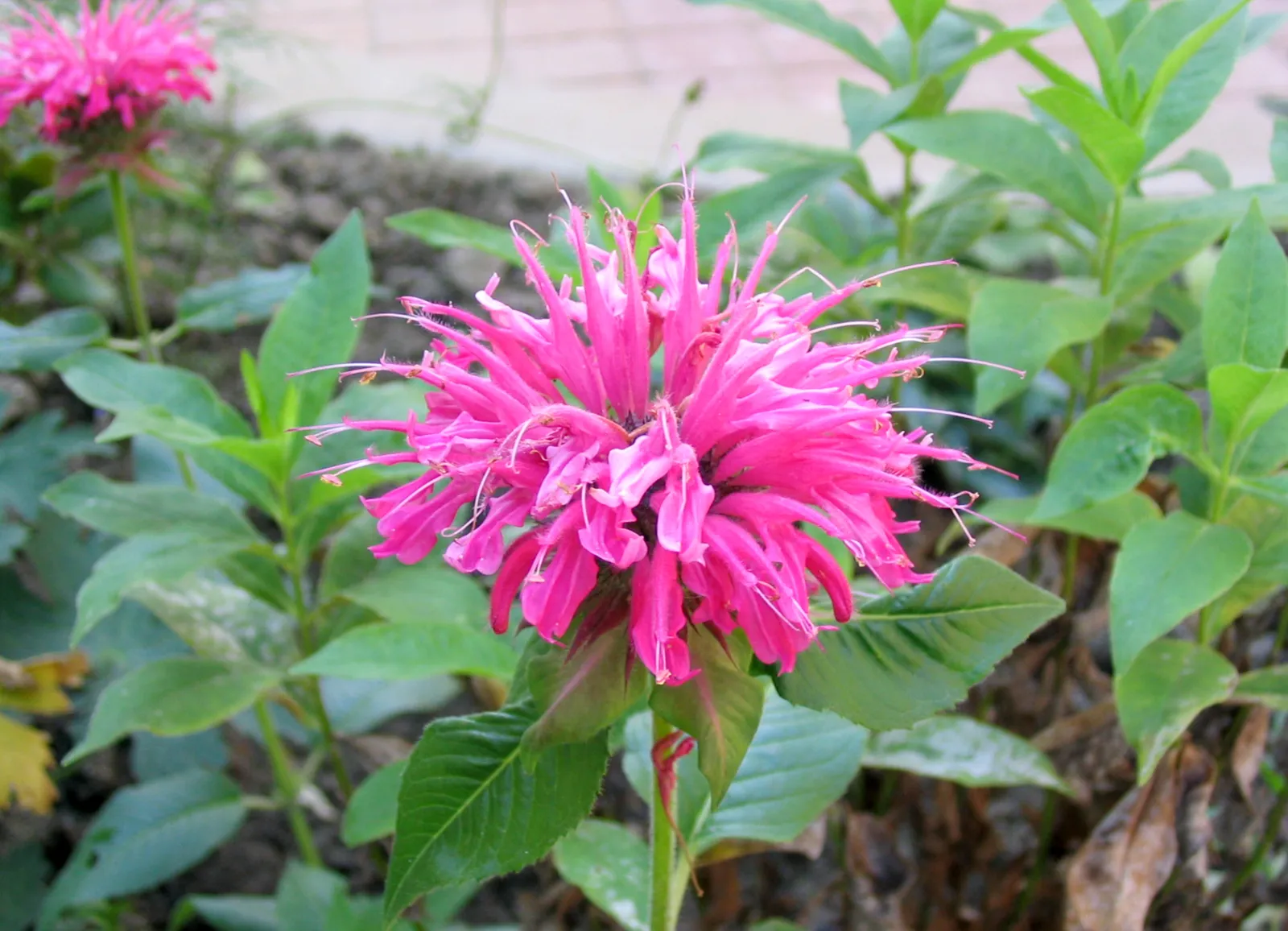
Bergamot or Bee Balm are bushes having pointed pink or purple flowers, making them garden ornaments. This perennial attracts bees and pushes mosquitoes away. Its leaves stay healthy for up to three years, after which they need to be planted again.
It has a citrusy fragrance that smells similar to orange fruit. It also has a floral hint of lemon in its smell. Hence it has a demand for scent-related products like essential oils, essence sticks, and air fresheners.
Final Takeaway
As a matter of fact, the UK is an excellent place to grow perennial herbs due to its mild climate and abundant rainfall. Growing herbs in the UK can be a great way to connect with nature and enjoy the benefits of gardening, including stress relief, physical exercise, and fresh air. And the best part is, once you’ve planted these perennial herbs, you can sit back and watch them thrive every year.
With proper care and maintenance, these hardy plants can continue to produce a bountiful harvest, adding beauty and flavour to your garden and kitchen for years to come. So why settle for the same old herbs when you can try something new? With a little bit of creativity, your garden can become a veritable cornucopia of aromatic and flavorful delights.
Let us know in the comments which herb you are most excited to grow in your backyard.

